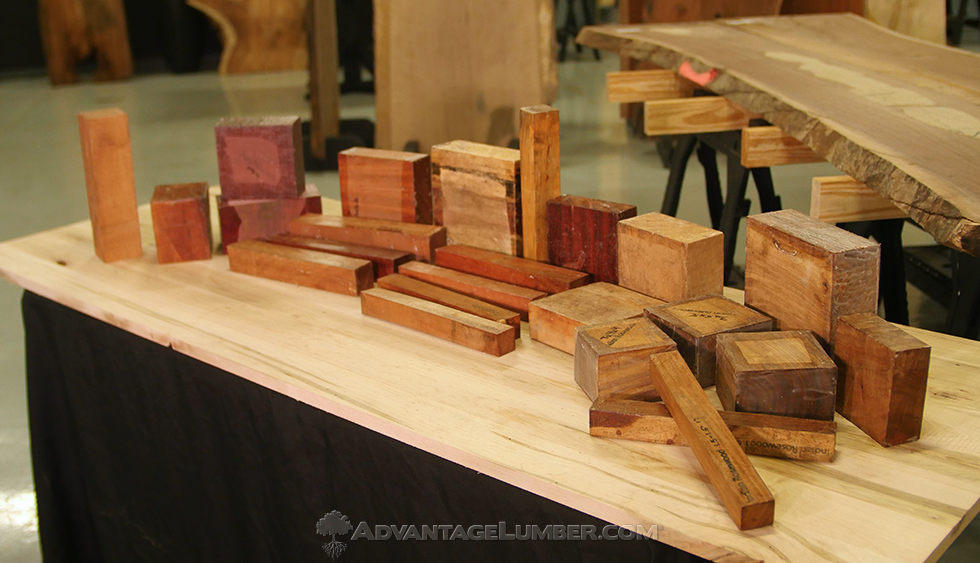- Scientific Name
- Tamarindus indica
- Common Name(s)
- Tamarind, Spalted Tamarind
- Distribution
- Native to tropical Africa;
- Average Dried Weight
- 53 lbs/ft3 (850 kg/m3)
- Specific Gravity
- Basic: .68, 12% MC: .85
- Janka Hardness
- 2,690 lbf (11,970 N)
- Modulus of Rupture
- 16,090 lbf/in2 (111.0 MPa)
- Elastic Modulus
- 1,918,000 lbf/in2 (13.22 GPa)
- Crushing Strength
- 8,640 lbf/in2 (59.6 MPa)
- Shrinkage
- Radial: ~3%, Tangential: ~7%, Volumetric: ~11%
- Appearance
- Heartwood is a deep reddish brown, sometimes with a purplish hue—heartwood portions of Tamarind tend to be narrow and are usually only present in older and larger trees. The pale yellow sapwood is very wide and sharply demarcated from the heartwood. Spalting and other discoloration are very common in the sapwood, and the majority of the Tamarind available in the United States is spalted sapwood.
- Texture
- Grain is wavy and interlocked with a medium uniform texture. Endgrain: Diffuse-porous; medium to large pores in no specific arrangement, few; solitary and radial multiples of 2-3; heartwood mineral/gum deposits occasionally present;narrow rays faintly visible without lens, spacing normal to fairly close; parenchyma vasicentric, lozenge, confluent, and banded (marginal).
- Rot Resistance
- Heartwood is reported to be durable to very durable regarding decay resistance, and also resistant to insect attack. Sapwood is non-durable and prone to insect and fungal attack, as well as spalting.
- Workability
- Because of its density and interlocked grain, Tamarind is generally considered difficult to work. Heartwood also has a pronounced blunting effect on cutting edges. Turns, glues, and finishes well—the heartwood is able to take a high natural polish.
- Odor
- No characteristic odor.
- Allergies/Toxicity
- Unspecified reports of toxicity have been reported for this wood species.
- Pricing/Availability
- Even though older trees can attain large trunk diameters, wide boards are rare as the trunks tend to become hollow in the center. The deep reddish brown heartwood is almost never imported to the United States—the sapwood is sold much more commonly under the label “Spalted Tamarind.” Expect prices to be high for an imported tropical hardwood.
- Sustainability
- This wood species is not listed in the CITES Appendices or on the IUCN Red List of Threatened Species.
- Common Uses
- Furniture, carvings, turned objects, and other small specialty wood items.
- Comments
- Tamarind trees are best known for their fruit, not wood. Tamarind trees are widely planted throughout the tropics both for their fruit, and also as an ornamental.


